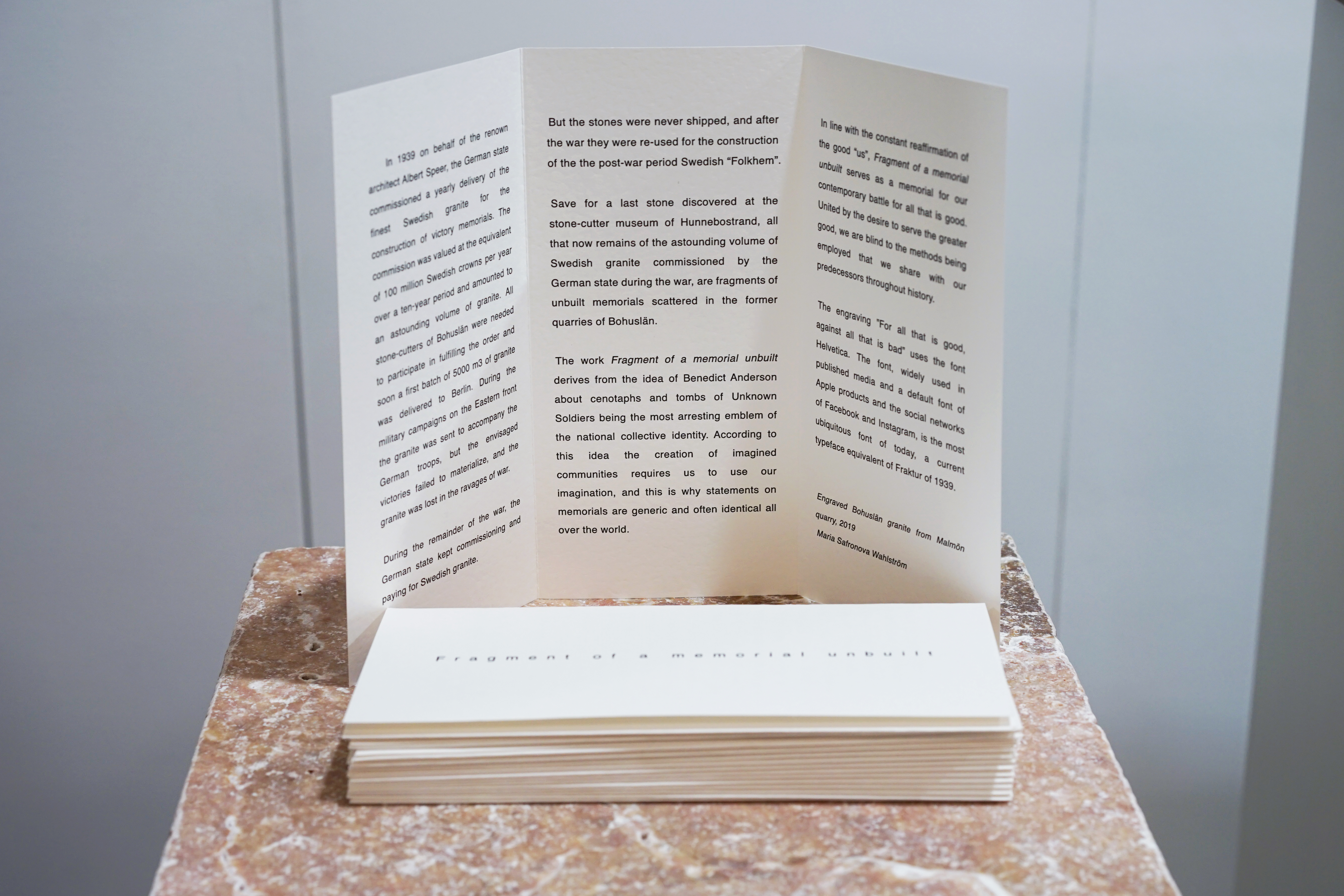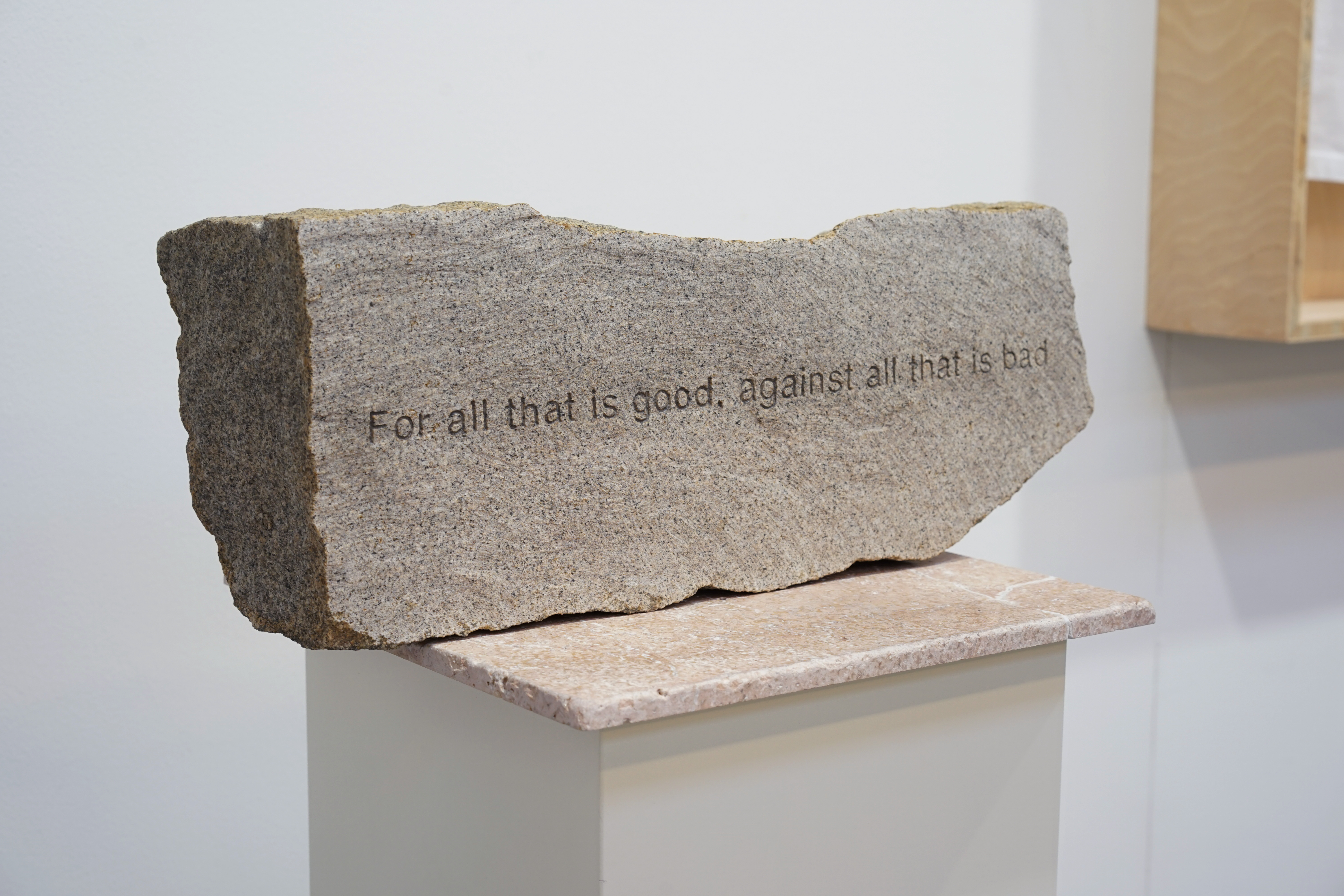Fragment of a Memorial Unbuilt
2018


Fragment of a memorial unbuilt
In 1939 on behalf of the renown architect Albert Speer, the German state commissioned a yearly delivery of the finest Swedish granite for the construction of victory memorials. The commission was valued at the equivalent of 100 million Swedish crowns per year over a ten-year period and amounted to an astounding volume of granite. All stone-cutters of Bohuslän were needed to participate in fulfilling the order and soon a first batch of 5000 m3 of granite was delivered to Berlin. During the military campaigns on the Eastern front the granite was sent to accompany the German troops, but the envisaged victories failed to materialize, and the granite was lost in the ravages of war.
During the remainder of the war, the German state kept commissioning and paying for Swedish granite. But the stones were never shipped, and after the war they were re-used for the construction of the the post-war period Swedish “Folkhem”. Save for a last stone discovered at the stone-cutter museum of Hunnebostrand, all that now remains of the astounding volume of Swedish granite commissioned by the German state during the war, are fragments of unbuilt memorials scattered in the former quarries of Bohuslän.
The work Fragment of a memorial unbuilt derives from the idea of Benedict Anderson about cenotaphs and tombs of Unknown Soldiers being the most arresting emblem of the national collective identity. According to this idea the creation of imagined communities requires us to use our imagination, and this is why statements on memorials are generic and often identical all over the world. In line with the constant reaffirmation of the good “us”, Fragment of a memorial unbuiltserves as a memorial for our contemporary battle for all that is good. United by the desire to serve the greater good, we are blind to the methods being employed that we share with our predecessors throughout history.
The engraving ”For all that is good, against all that is bad” uses the font Helvetica. The font, widely used in published media and a default font of Apple products and the social networks of Facebook and Instagram, is the most ubiquitous font of today, a current typeface equivalent of Fraktur of 1939.


Installation shots by Maria Safronova Wahlström
Engraved Bohuslän granite; approx. 50x25x25 cm